The NEXT Canvas
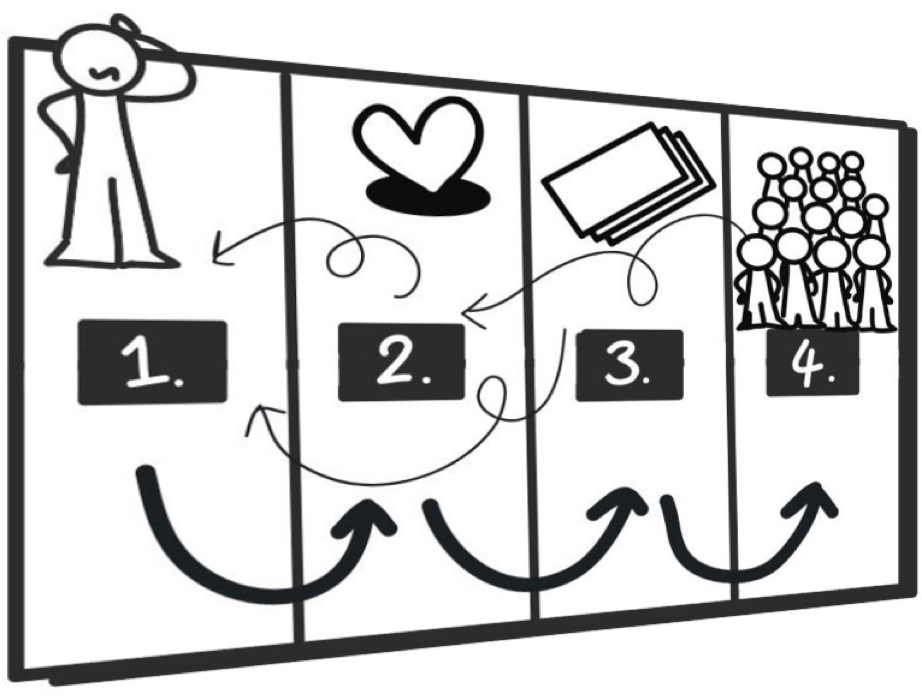
An Innovation Framework for testing business ideas
About the NEXT Canvas
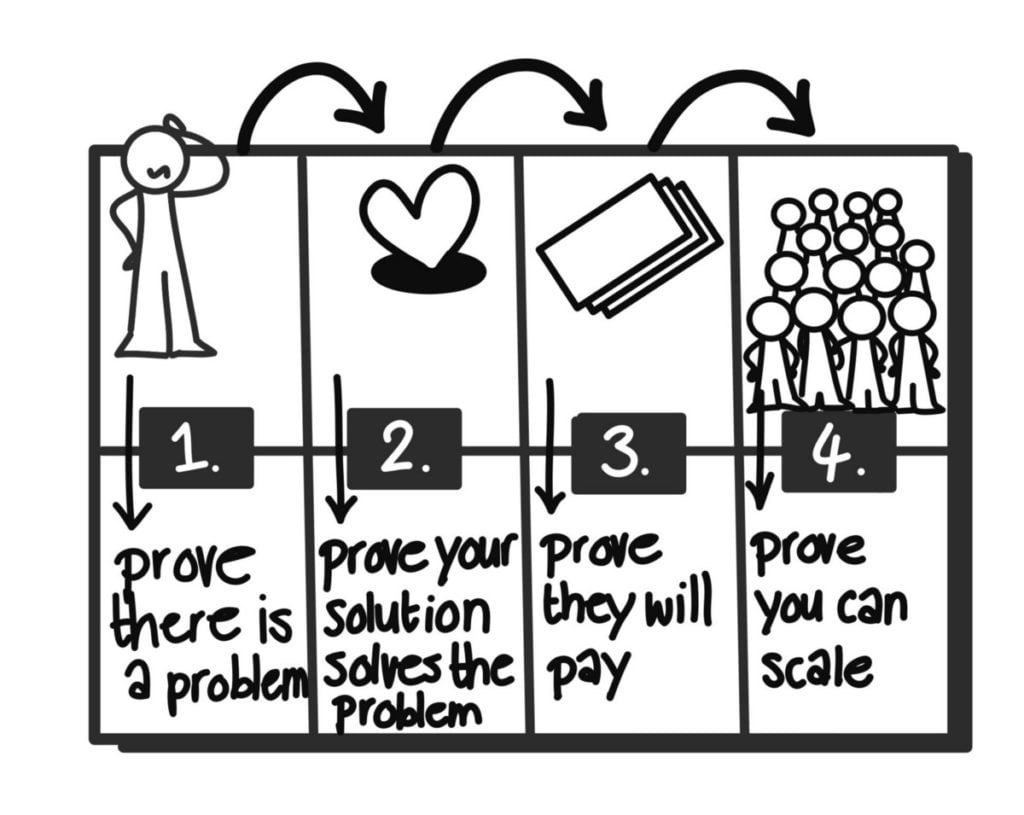
In 4 steps to scale
The NEXT Canvas is an innovation framework to track a business idea’s progress from a great idea to a validated business model.
The NEXT Canvas visualizes the four types of proof an idea needs to become a profitable business model: First, the team needs to prove there is an actual problem to solve. With a clear problem in mind, there is proof needed that the team can create a solution to solve that problem. After there is a proven solution, there needs to be proof that customers will pay, and finally, the team needs to prove that the business model can scale.
1. Prove there is a problem
The most important part of any business model is the question of what problem are you solving for which customer? The first stage of the canvas focuses on finding proof there is an actual problem. It helps you define an early customer segment and zoom in on the problem.
2. Prove your solution solves that problem
After you have defined your customer’s problem, it is important to understand why they would hire your solution. What job are they trying to get done? Only if you know that you can start thinking of a solution.
Of course, most corporate startup teams and even startup founders start with a solution in mind. A vision of a brighter future. It is important, however, to start at the beginning and define a clear problem. Otherwise, you won’t be able to create the perfect solution to solve that problem.
While working on your solution, you might notice that you target the wrong customers or haven’t really nailed down the problem. It helps to make an iteration back to the Problem stage to revisit your assumptions and proof to build a product or service your customers want to use.
3. Prove they will pay
After building a solution that your customers want, it is important to prove this by first setting up the right metrics and then by proving your customers are actually willing to pay. There can be no profitable business model without customers taking out their wallets and transferring money to yours.
At this stage, it regularly happens that it turns out the envisioned perfect customer segment is not willing to pay or not pay enough, and you have to make a pivot. Making a pivot means you have to revisit all previous stages. From Problem to Solution and Revenue.
4. Prove you can scale
The hardest stage towards a profitable business model is proving you can scale. You have to be able to grow from an early evangelist customer segment to a much larger and broader segment that can help you scale. This broader customer segment has (slightly) other problems, has another job to be done, might need a different solution, and might not want to pay the same or in the same way as your customer segment. You are now juggling all eight puzzle pieces from the canvas to prove the final stage.
The 8 building blocks of a scalable business model
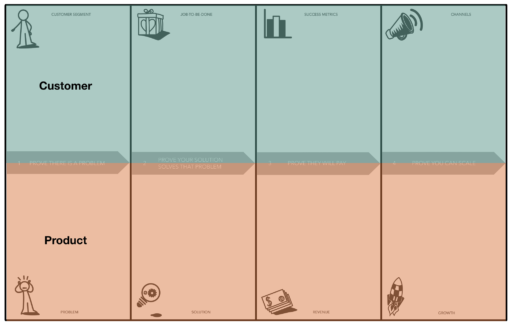
The bottom part of the NEXT Canvas is about your solution. What problem is the solution solving, how are you solving it, how will you make money?

Customer Segment

Job to be Done

Value Proposition

Channels

Problem

Solution

Revenue Model

Growth Engine
De-risking a business model is not a linear process
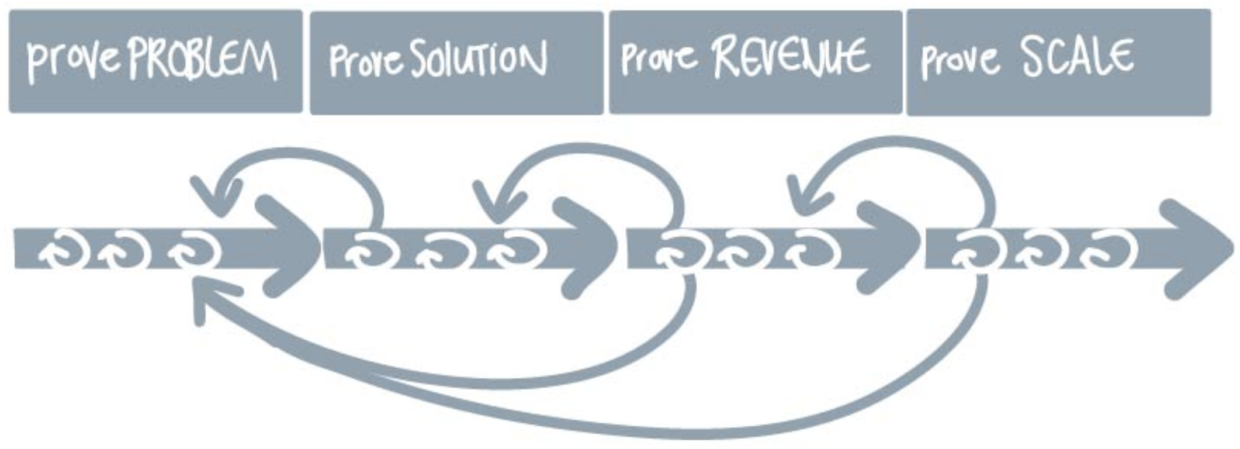
Although the four stages from great idea to scale are directional, using the NEXT Canvas is not linear.
When validating the Problem and Customer segment, you are using two segments of the NEXT Canvas.
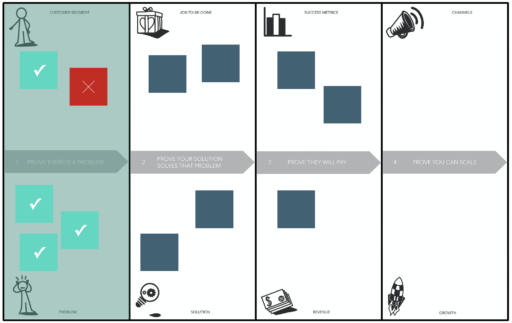
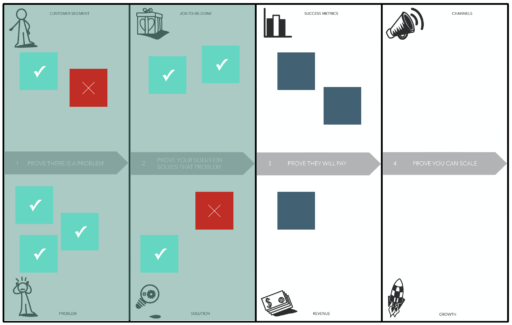
When you have gathered enough evidence to validate the Problem and Customer Segments or de-risked it enough to feel confident to take a step forward, you move to the Solution stage.
Validating the JTBD and Solution does not mean that you don’t have to look back at the Problem and Customer Segment. It is not a linear process! You are now trying to solve a puzzle with 4 pieces instead of 2. All pieces need to fit together to be able to scale.